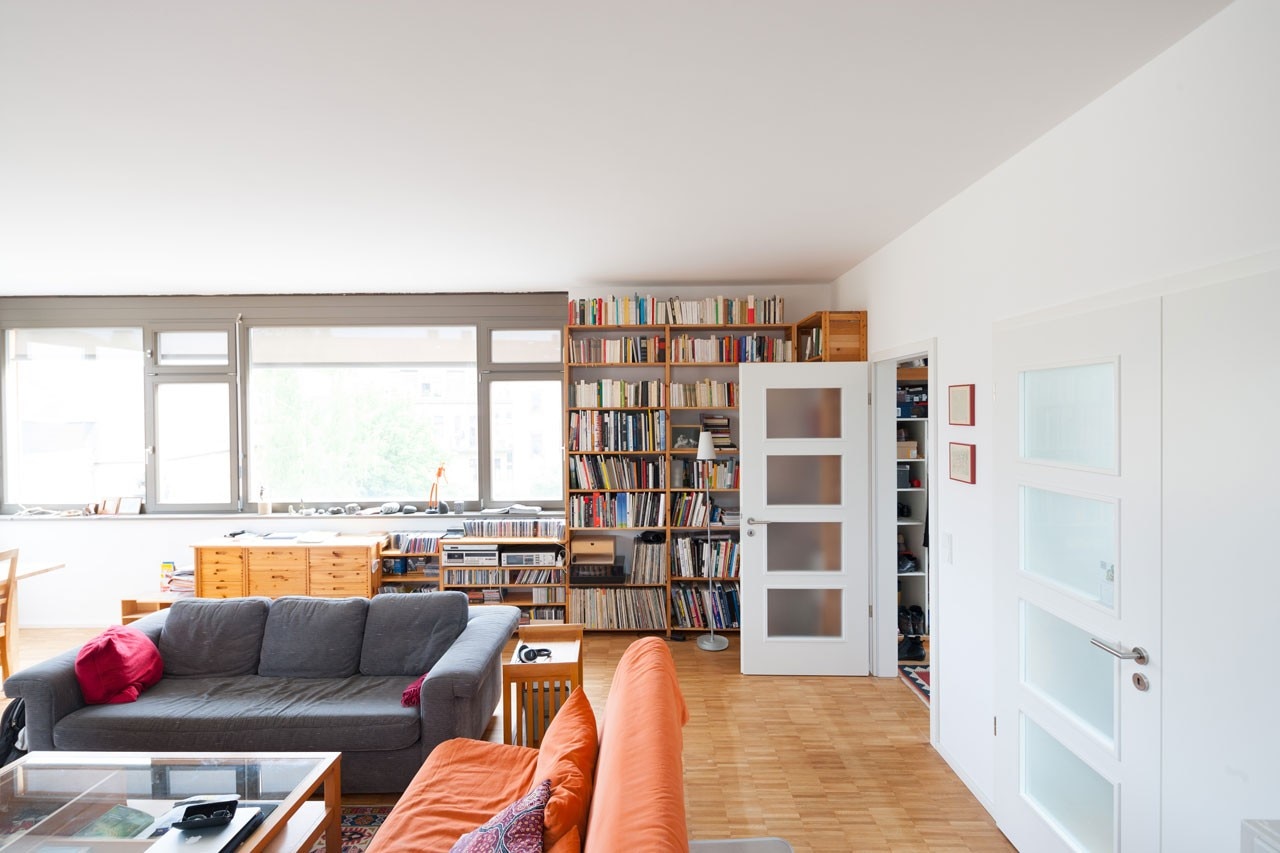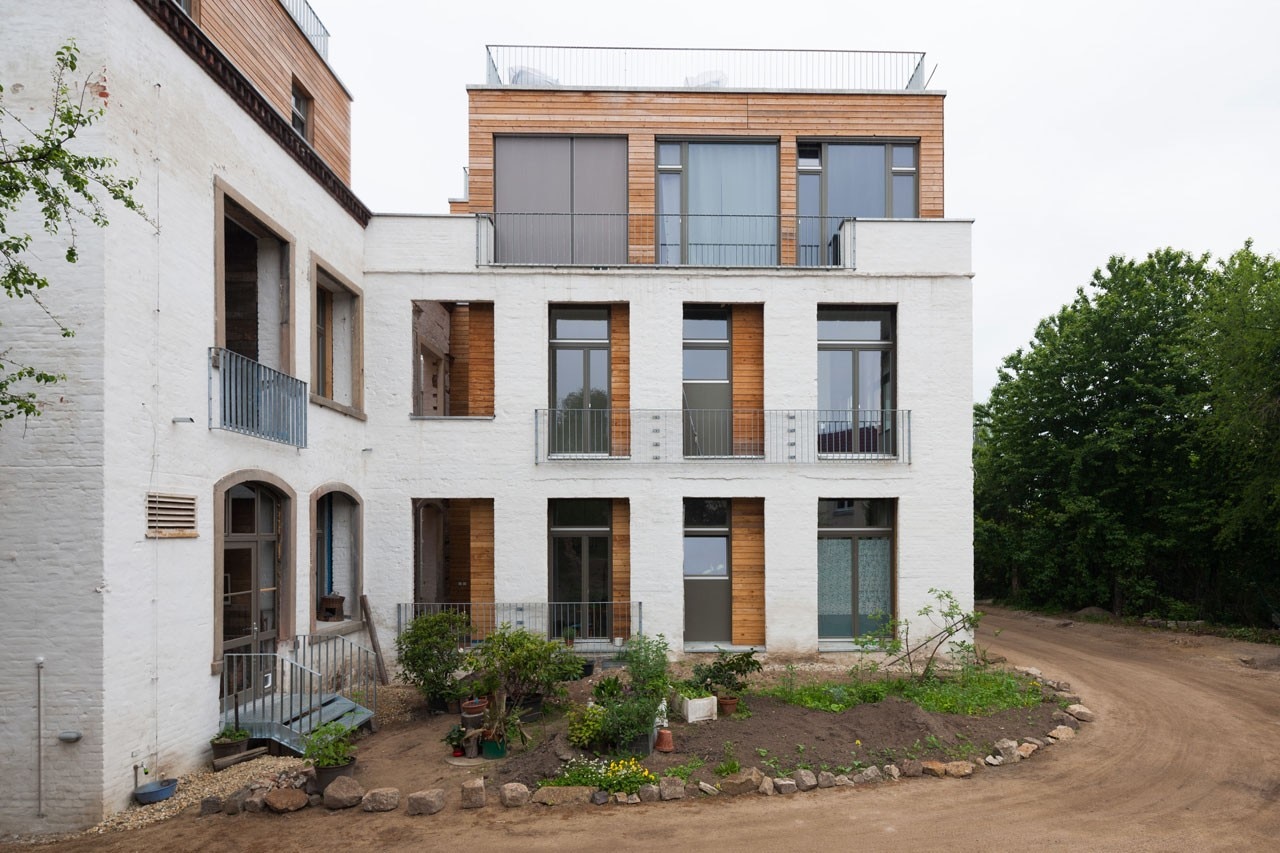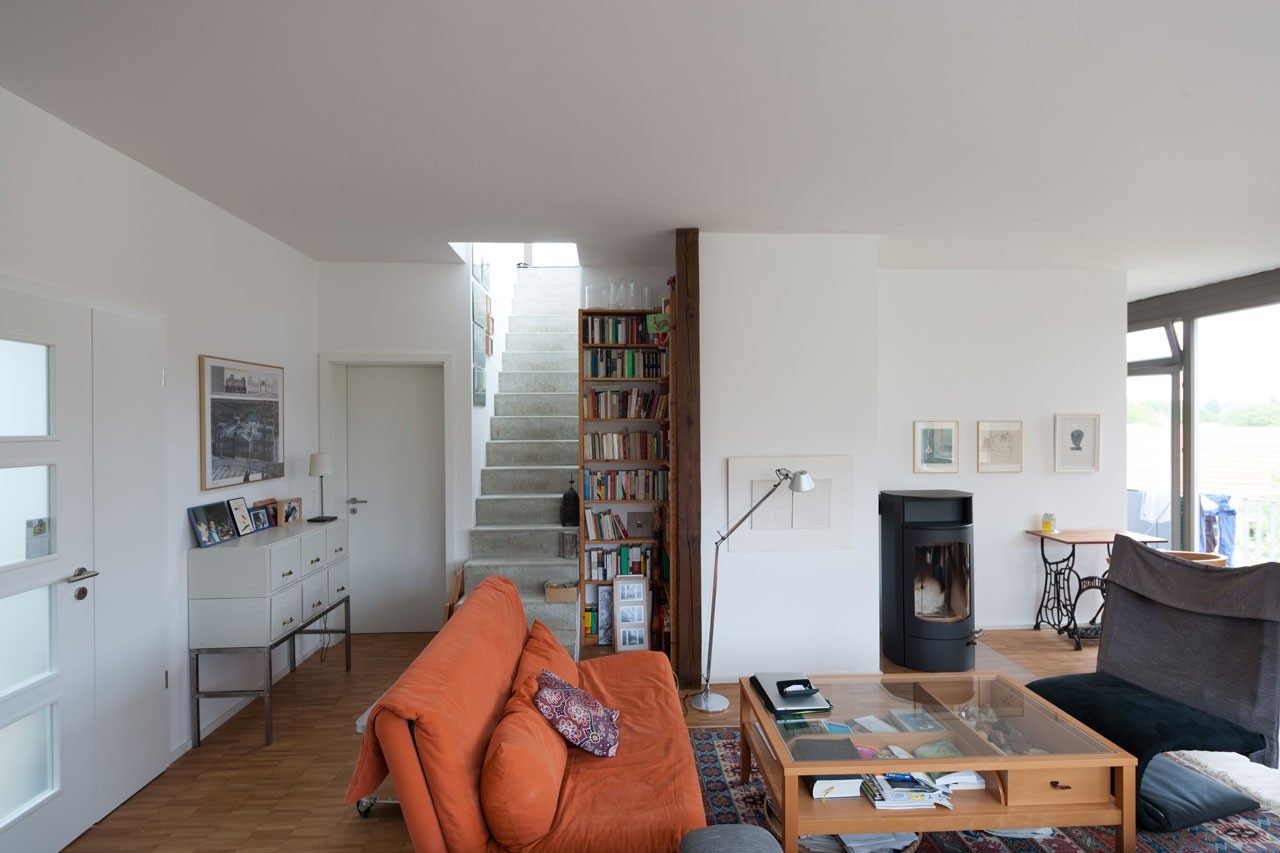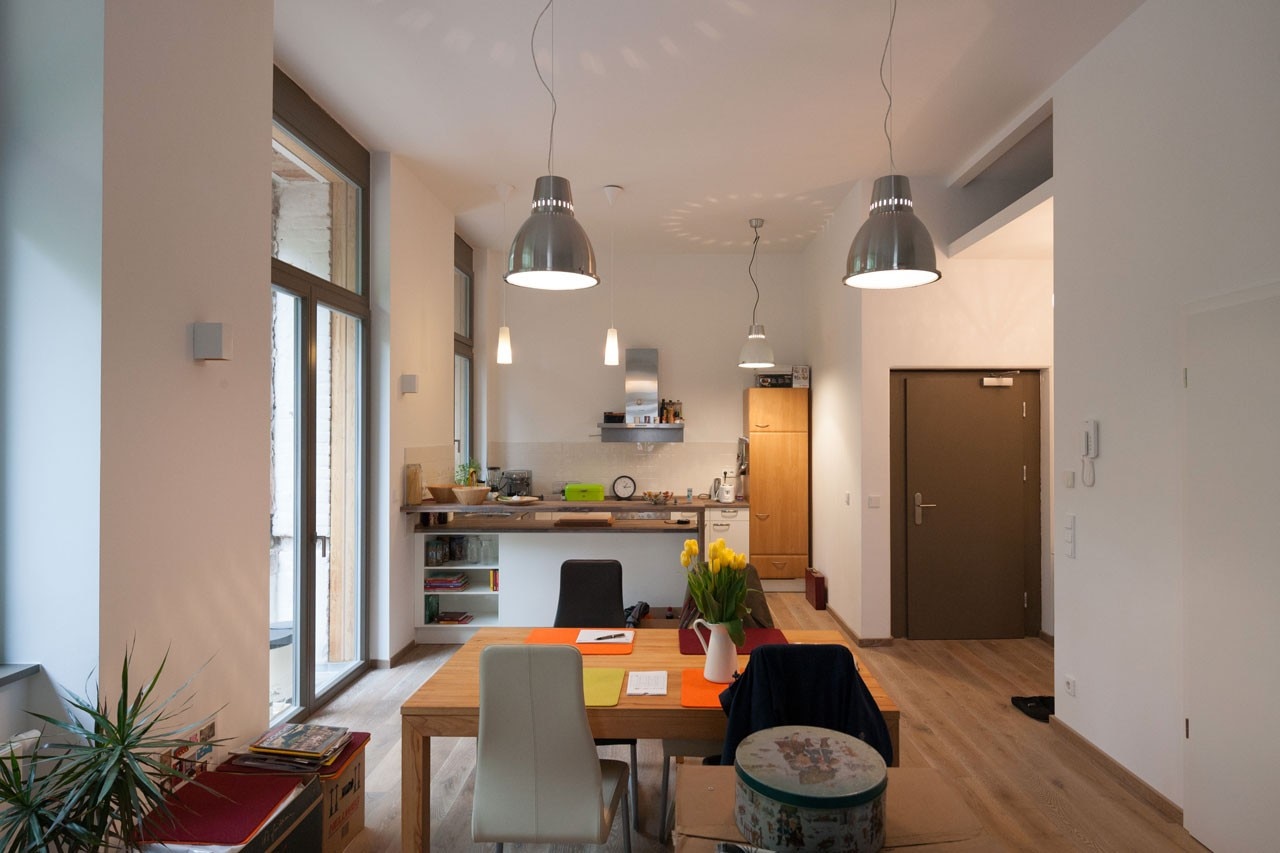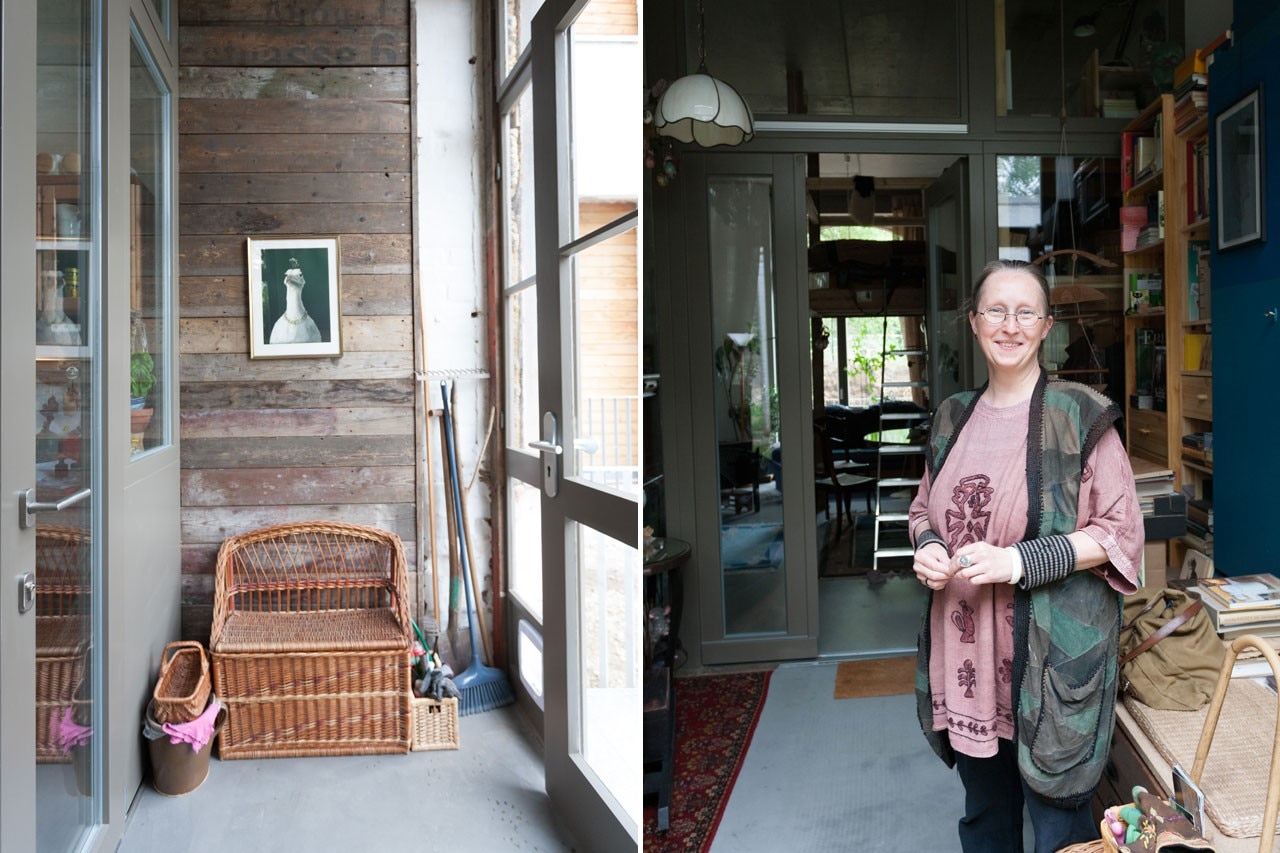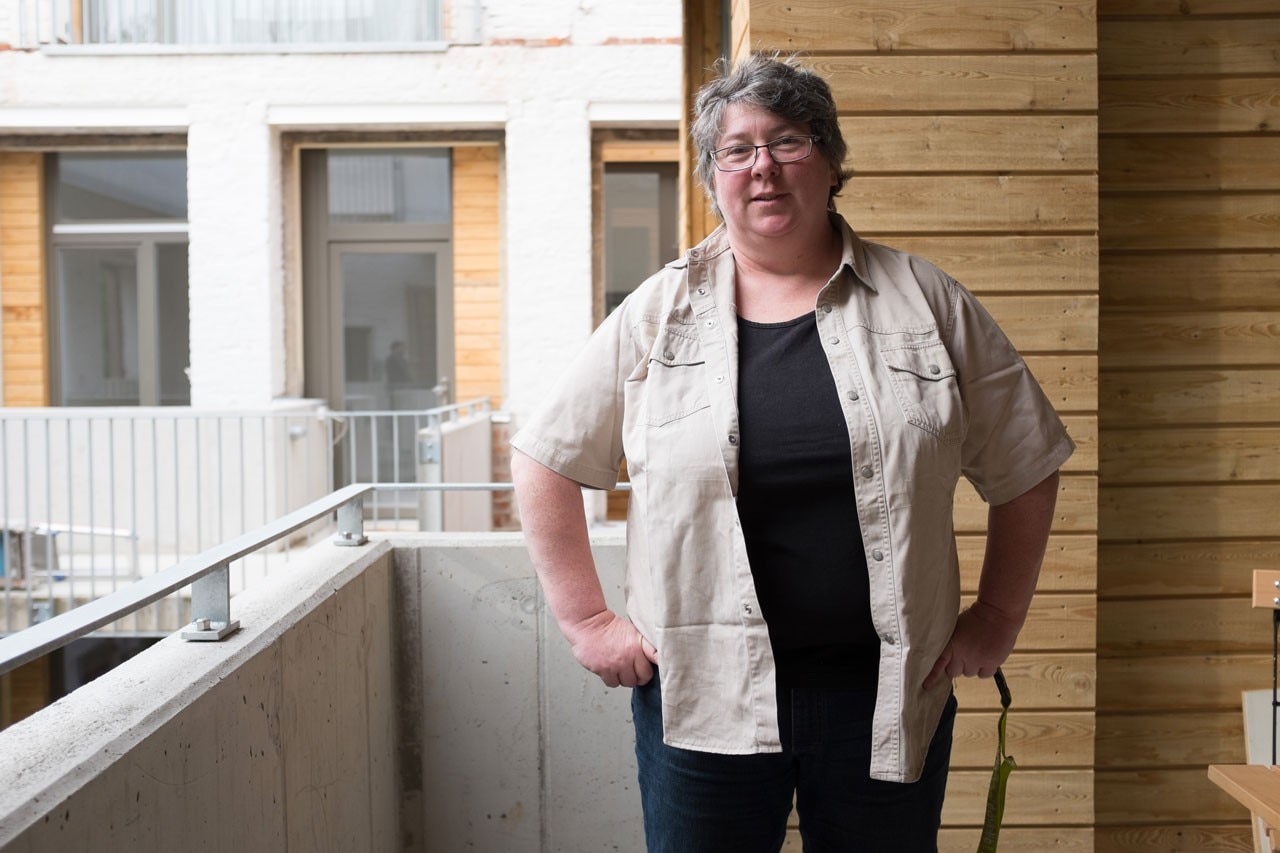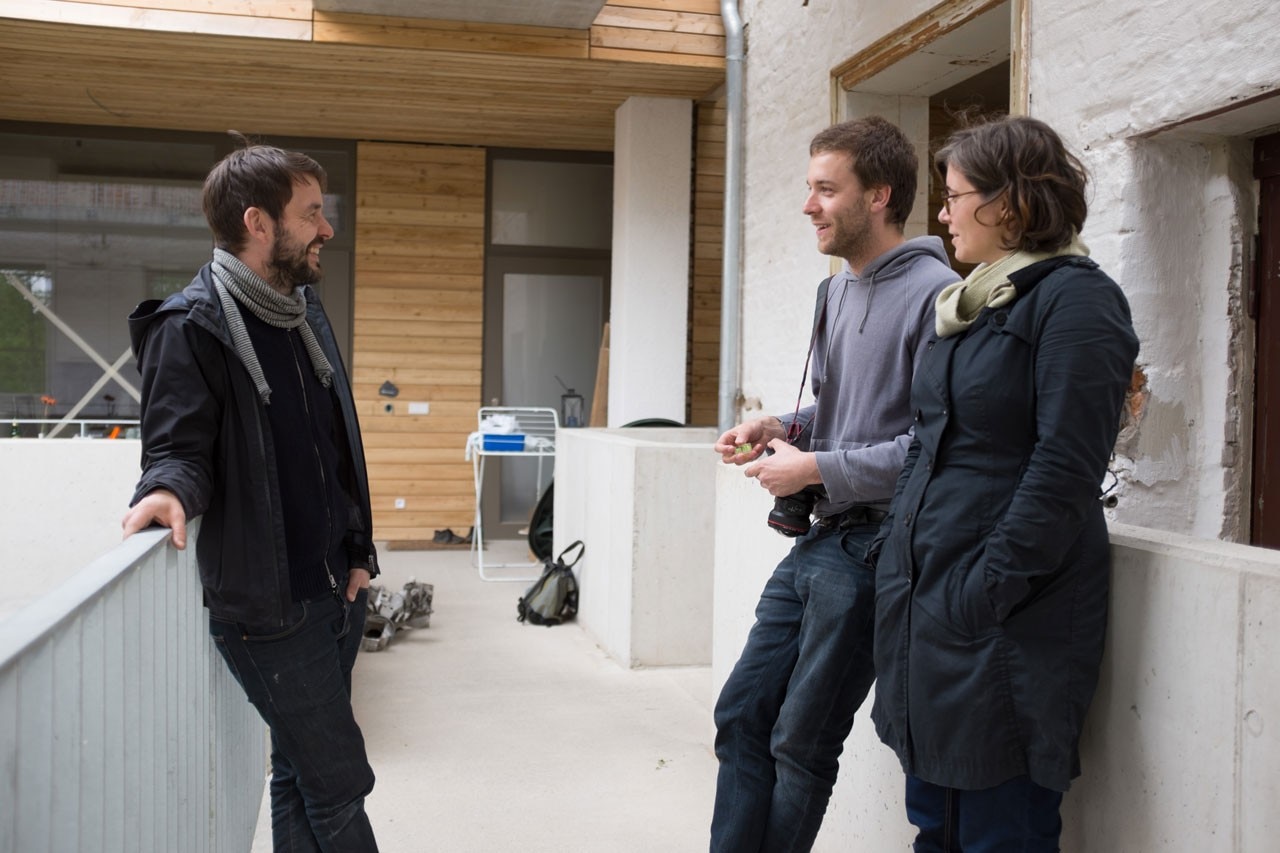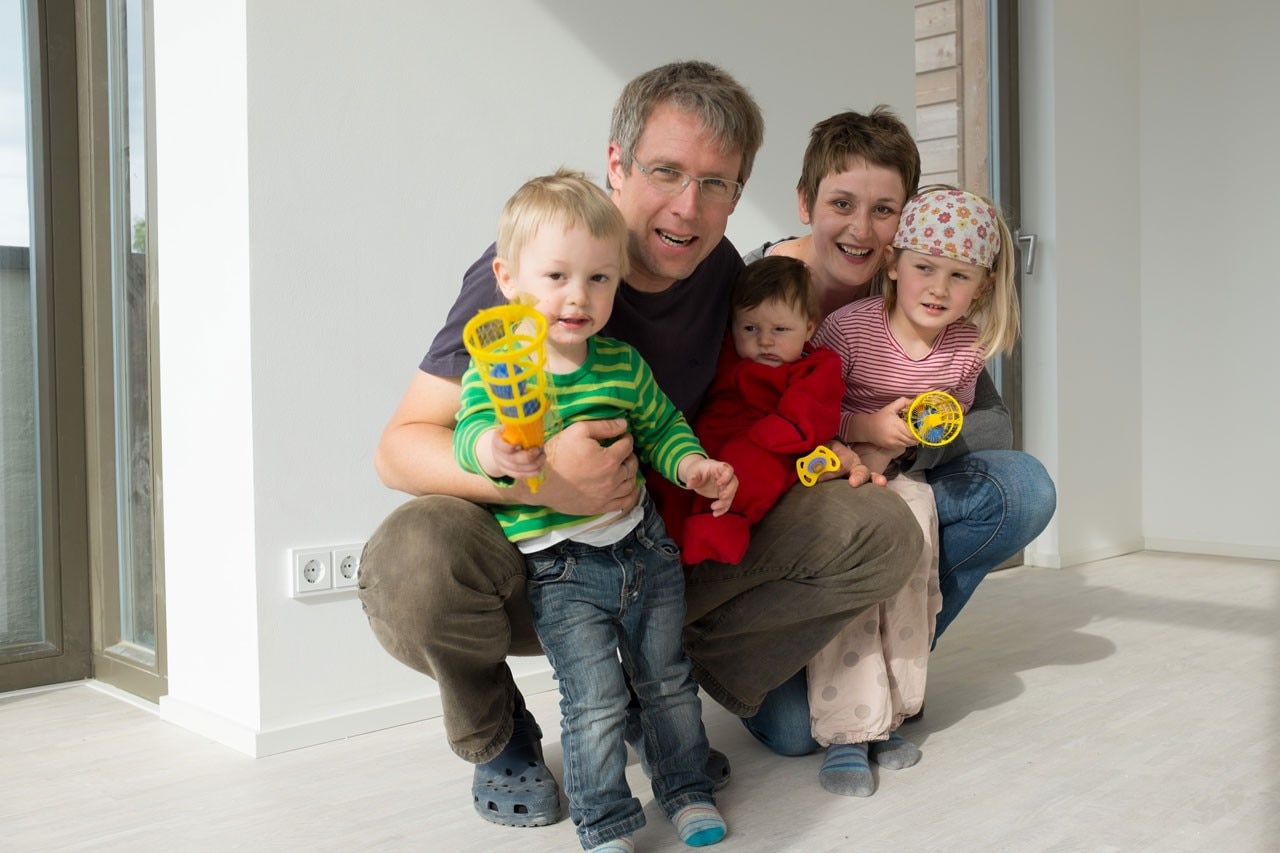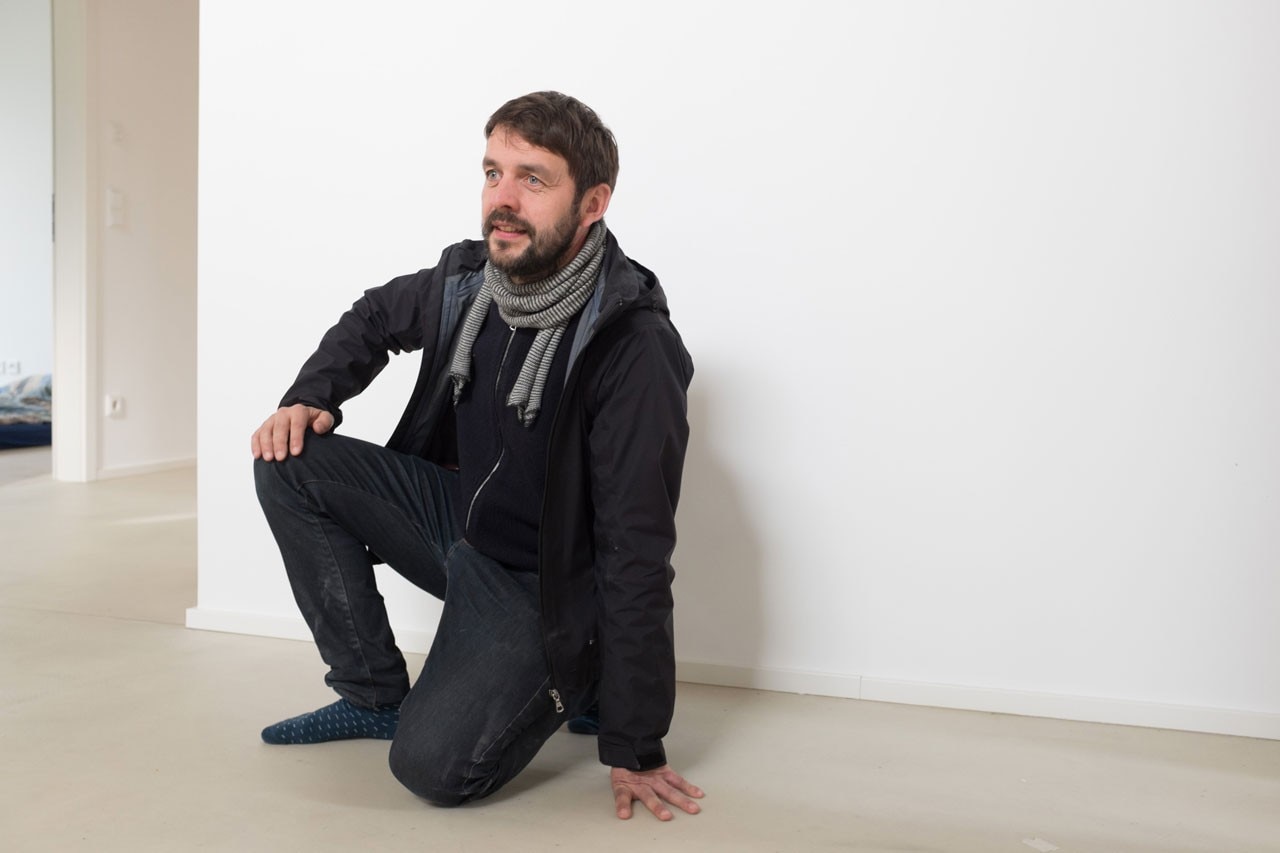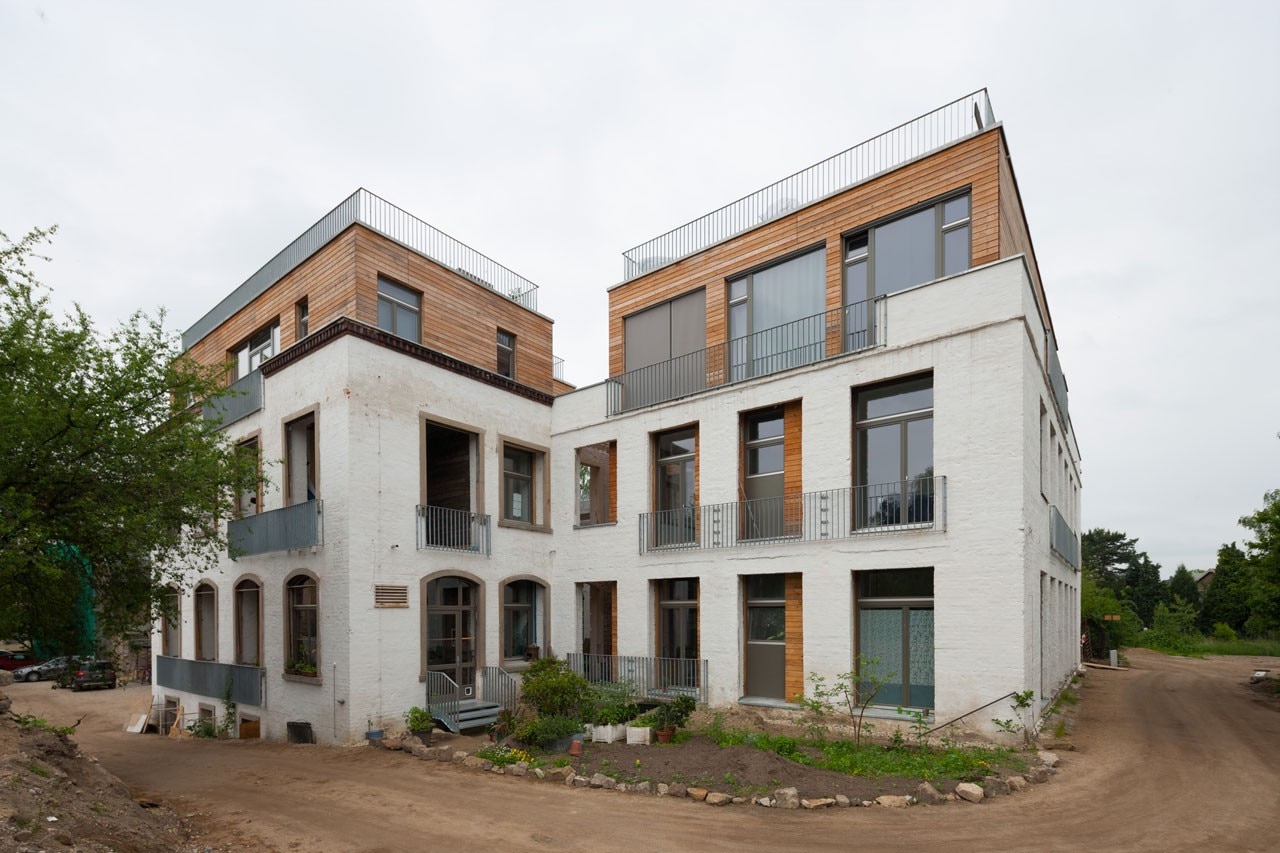
Philippa Nicole Barr: So who was the client for this project?
Henry Praeger: The clients were actually a group of people who were unknown to each other, with totally different backgrounds, financially and socially as diverse as you can imagine, but with a strong desire to form their live into a community project profiting from the different generations below one roof.
PNB: What gave them the idea for this project? How did they find each other?
HP: Two members of the group, Susanne and Michael Hecht, the ‘initiators’, had the idea to find an old yet interesting abandoned building in Dresden, and to organize it in a way that is barrier free and able to split, allowing for a ways of inhabiting the building other than what is standard for our preconceived notions of how a ‘family’ would live together. They wanted an older building and a 'green' project. Basically every challenge in contemporary housing which architects face today! We have a saying in German ‘eierlegende Wollmilchsau’, to mash all the animal produce of farmed animals into one, or put into one device, like a ‘swiss army knife’. This wasn’t enough; it became even more complicated, because they wanted to build up the group of the community over an actively involved planning process. To be honest it sounded unmanageable, but as I said it rarely happens that a client is that ambitious and able also to dedicate a tremendous amount of time. So from the beginning, we were very tempted.
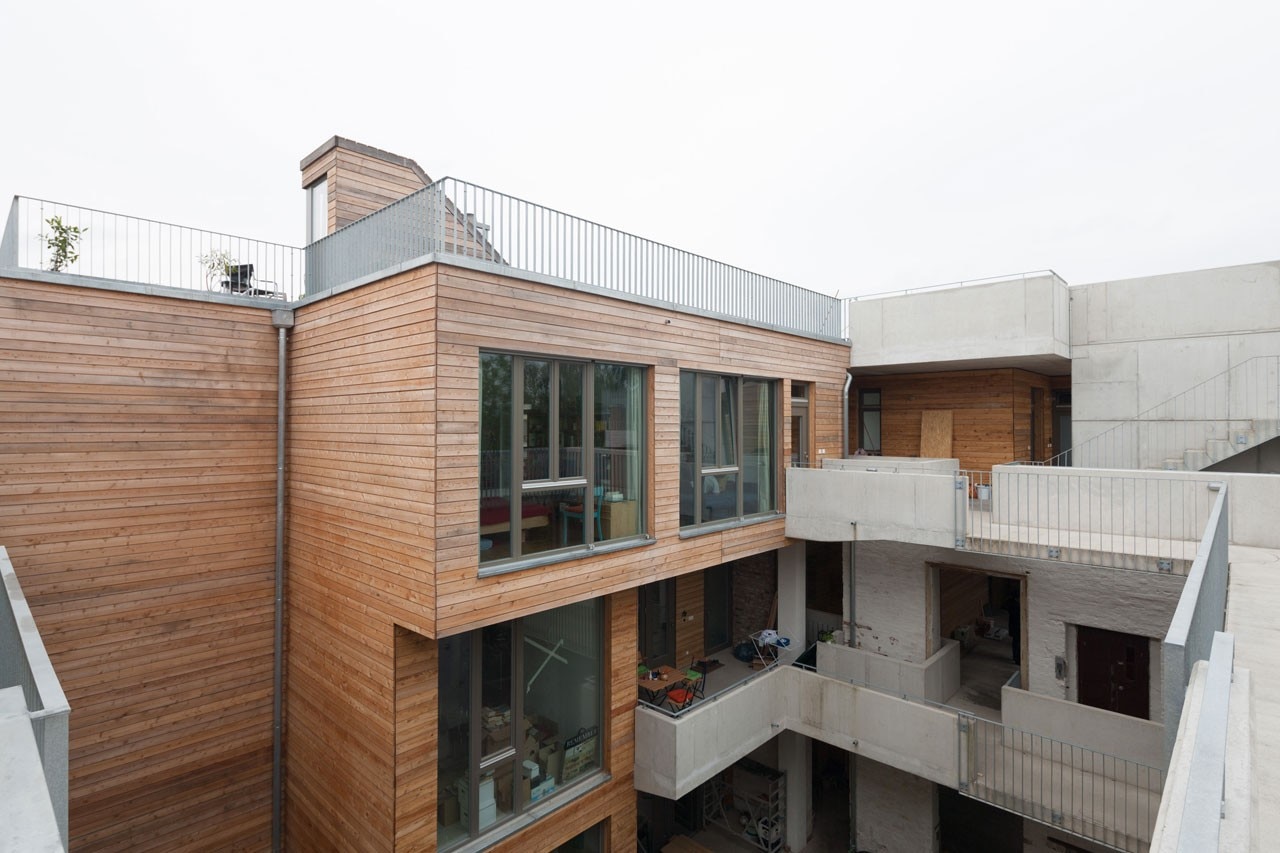
PNB: What kind of building is this and how did you transform it?
HP: An old Tobacco building from the 19th century, over two floors with two wings around a central access with a staircase, not part of the heritage listing of buildings near Dresden Neustadt. Our initial move was to change the typology of the building. We opened up three wings around a courtyard in the centre to create light, so that every wing is in the end part of a four sided building which is in part organized around a centre. If you cut out something in the middle the perimeter is extended and you have more outer facade! So that the result is flats facing every direction - south east, north and west. From there on everything became a joint way of planning together with the clients
PNB: Were the clients involved into the planning process?
HP: Extensively! They have directed it from the outset. Once we had that fundamental schema the group formed a variety of a kind of planning departments were everyone could participate and explore their interests in close cooperation. From wild ideas to mediocre stuff, we had to address everything. The main area of work became the organization of very simple questions like, “how to make decisions, how to prepare meetings, how to communicate and involve everyone and manage the whole process”. Very early we were felt that the house was just one part of this kind of social sculpture we all were working on.
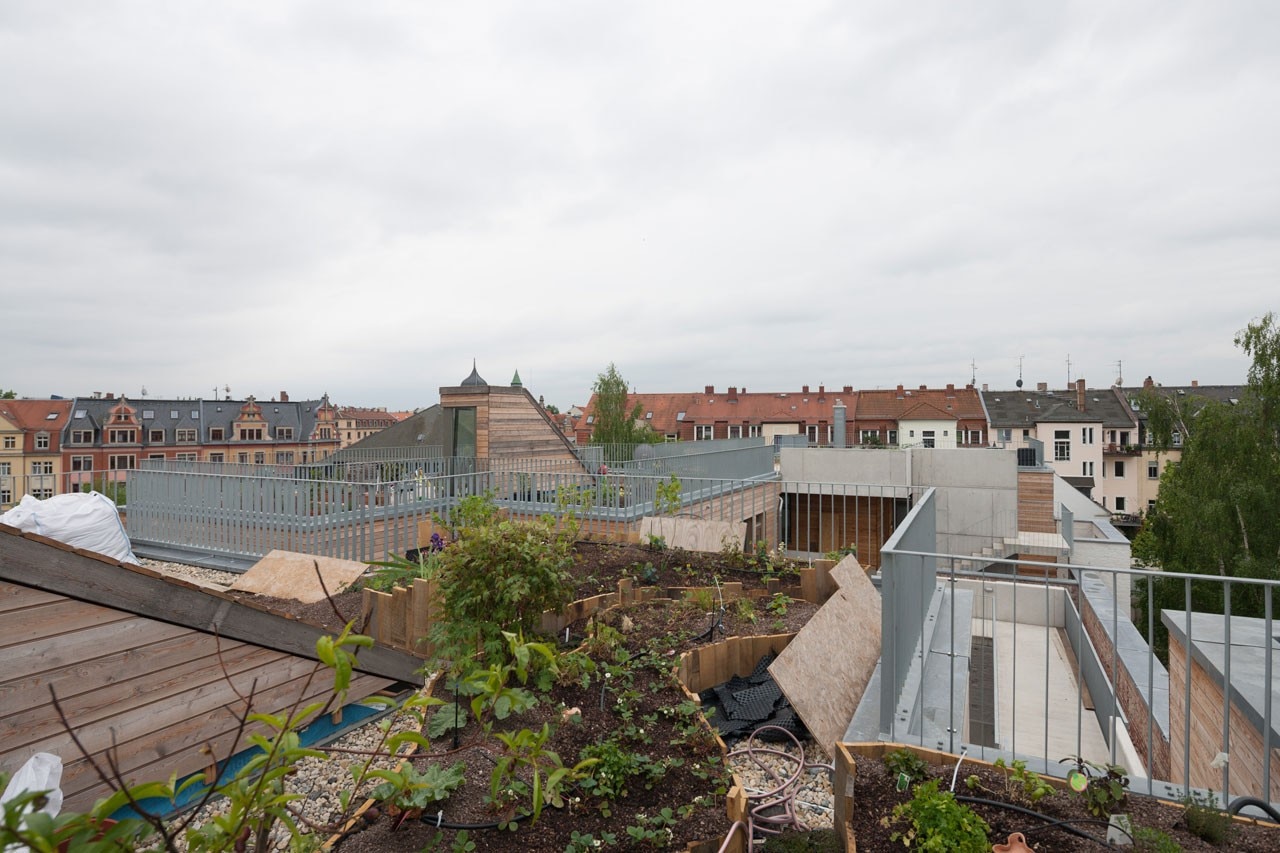
PNB: Can you explain how this changed the methodology of the design process in this case?
HP: Well, any dissatisfaction with designs we proposed became less important. The real work became a massive communication persuasive enough to maintain the planning process, and on the other hand open for participation. So in the beginning we thought it is a kind of archaeology of information from the side, from the planning departments, from the industry and the clients, because there is a gigantic amount of information to filter. The archaeology of the very recent past is called forensics, a notion we like alot. Like investigators, we traced, collected, examined and analysed the protocols of the last meetings we had organized. A reflection to all the legal regulations and the change of methodology the process of forensic became the most obvious observation.
PNB: Can you elaborate on the notion of forensics?
HP: Forensics derives from the latin word ‘forensis’ meaning forum. It has basically two meanings or spatial intentions, one is the scientific investigation of the existing context and the other is the rhetoric of creating possible fictions along the processed evidence. We love the idea of architectural design as a construction of a persuasive communication.
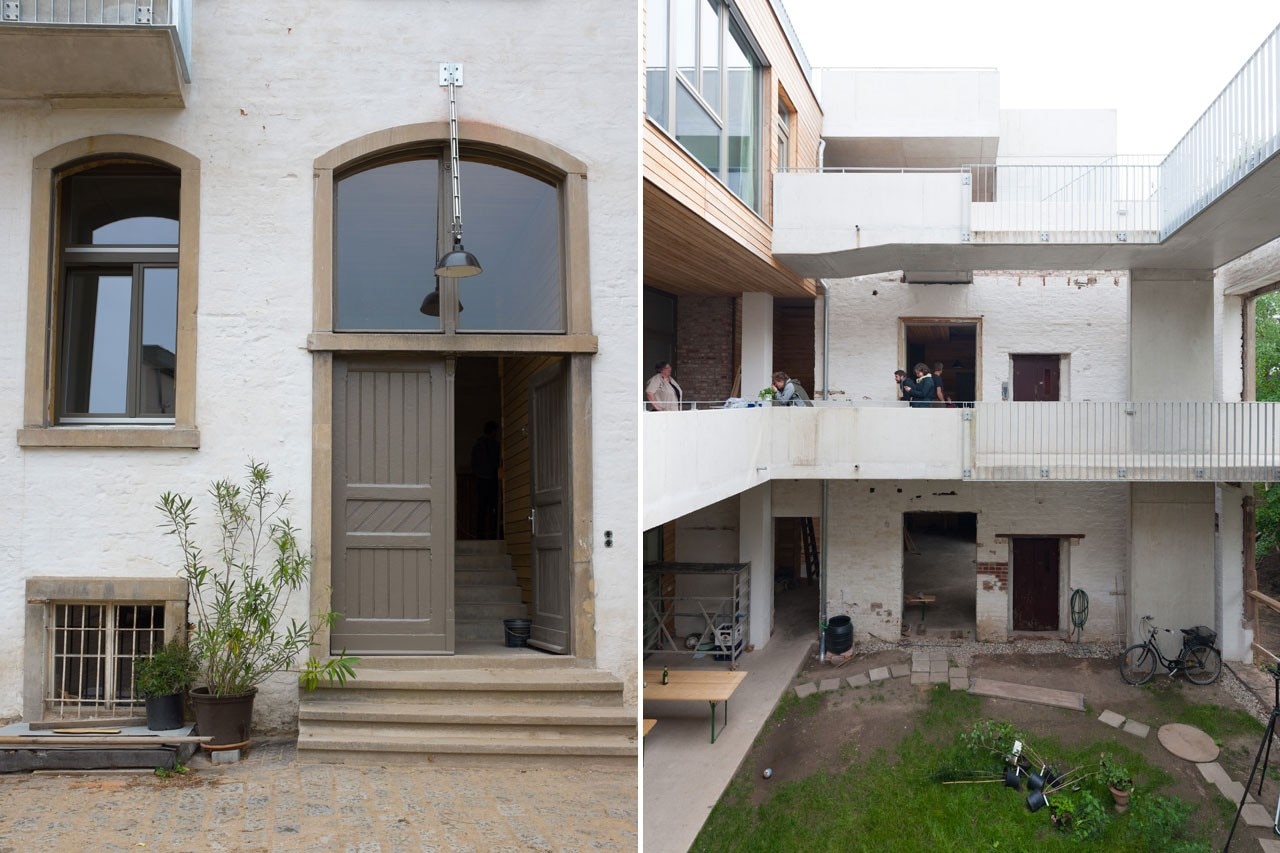
PNB: So how do you define the role of the designer?
HP: It is a painful process because you must open up your ideas for transformation at a very early stage. We are very honest about what is just an idea and unexplored, and what is already more substantial. We behave like forensic experts investigating a crime scene, we collect, examine and analyse the task and situation alongside facts and try to present it without emotion, we try to frame the problem. In the end we are professional collaborators of the group, whose aim is to develop the social structure, and it can mean making many sacrifices and departures from the traditional approach to the design process. The idea of control is at stake, but this is another very long story.
PNB: In what way had the planning process been affected by new media tools and information?
HP: I don’t think we are aware of the tremendous challenges created by the new media tools and information which have involved every aspect of our lives. I like to think of the words of Marshall Mc Luhan and his explanations of ‘media as massage’, that the human faculties have been extended by media devices and new media like smart phones, where everything can be instantly communicated, reforming an global ‘oral’ culture. This is basically for me the significance of the phrase ‘global village’. But this follows the ‘Gutenberg’ age from the Renaissance until the 20s in the last century, were everything could be displaced in time by the written word and the superiority of opinion and power depends heavily of the control of this printed mass media, from the bible to the newspaper. Today we live with blogs, twitter, push apps and we have to have a closer look into cultures witch were totally dependent on the ‘oratory’, because our communication becomes disperse, all talking at the same time. To get listeners you have to be persuasive like Cicero in front of a judge of one hundred citizens of all different classes. If we look at the heyday of oral culture in ancient times, in the Greek polis or the Roman system the development of democratic systems depended on knowing how to communicate in public. This is another reason to speak of a forensic method, because also architecture is utterly depending on the same rhetorical mechanism.
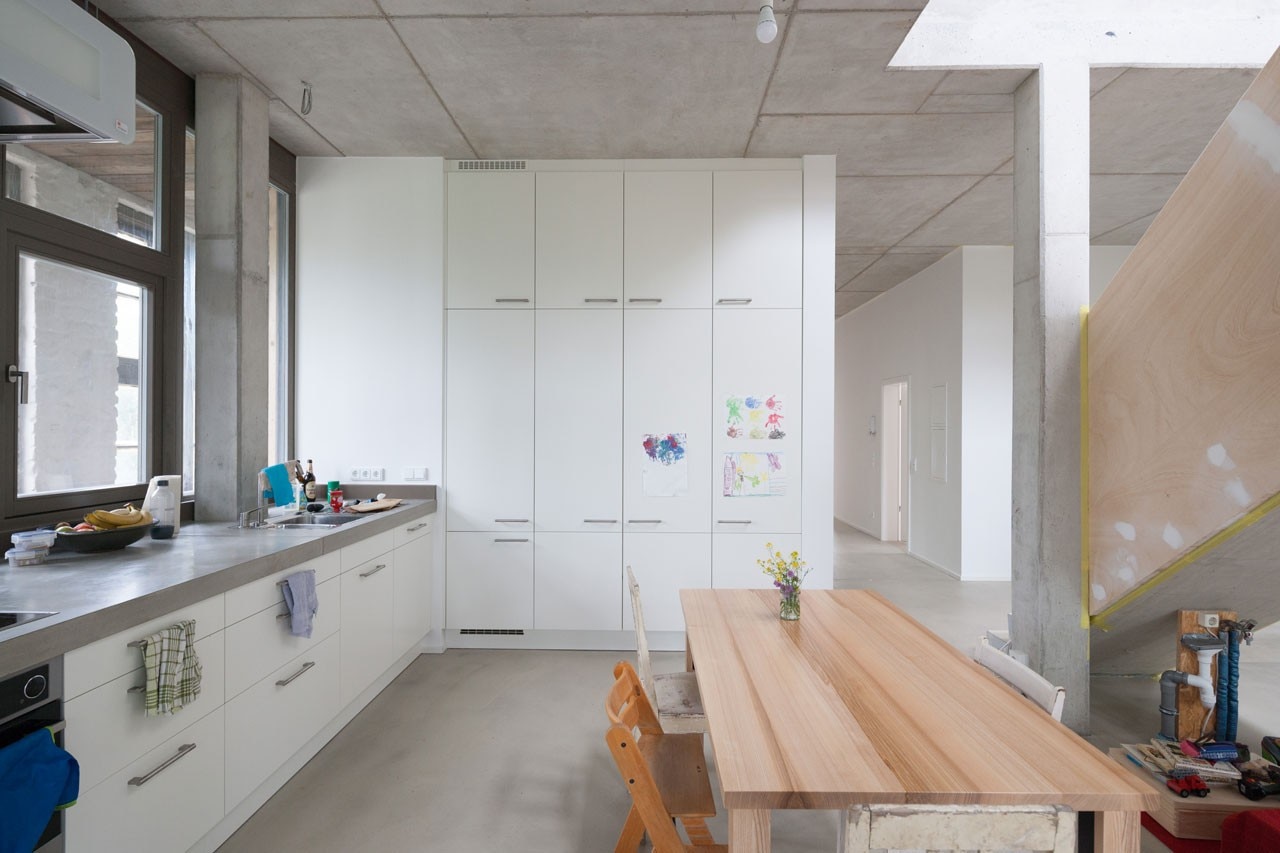
PNB: How are these tools and new media involving clients as collaborators?
HP: To be honest if I had the clue it would be terrific, but all what we do is in fact experimental. Everybody of the group has his own ideas and interests and then they want to take care of others differently, they call, text, email, invite you in other social networks, send you information, basically like a friend or a close neighbour so it is really like a cloud of everybody talking and you can hear nothing. So traditionally you draw a line between professional and private, what is allowed and what is too much. But things go not one way, if you want to use the tools then it goes in both directions. So transparency is the first step, then organisation, schedules, portals, so that everybody can download all the information of the project. The work on information becomes important, the structure, what is on the plate to discuss, how will it be arranged, how will it be presented and discussed? To have a look at Aristotele famous book on Rhetoric it is impressive how much we already know about the structure of these processes of communication!
PNB: Do you think it is bringing together a community?
HP: As someone taught by professors who were involved in the 70s participation projects in architecture you always think: No, this has to fail! It is against any sense of historic knowledge. I think this linkage to social networks which are already woven is something of global interest. In every social movement right now relationships are becoming of such great interest to our culture that I couldn’t name something more important for the near future. The great thing is that we have all participated in the project and witnessed this experiment.
–
© all rights reserved
